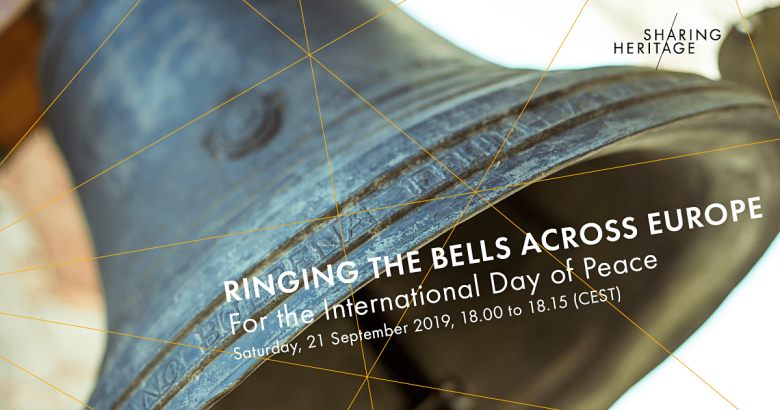Ringing bells across Europe for the International Day of Peace
In 2019, on the “International Day of Peace” of the United Nations, church and secular bells are ringing throughout Europe for the protection of Europe’s cultural heritage: peace and European cultural values.

The success of the European Year of Cultural Heritage 2018 has shown that identification with the common cultural heritage is crucial for the future of the European project and for world peace. Societal changes towards more sustainable life and democracy can only be achieved through cultural change, reflection and further development of cultural values. Therefore, cultural heritage is the key to social transformation and peaceful coexistence. The Berlin Call to Action: Cultural heritage for the future of Europe is a result of a Europe-wide commitment in the Year of Cultural Heritage and calls for an appropriate EU action plan and a strong emphasis on of cultural heritage in the new EU financial framework.
Culture today is acutely threatened by conflicts, environmental changes and of forgetting about heritage as we live in ever-changing societies. In the European Year of Cultural Heritage 2018, the ringing of the bells was one of the largest and most successful joint Europe-wide events. This year it is an acoustic signal for the many dangers to which cultural heritage is exposed.
In Europe, Europa Nostra, Future for Religious Heritage and the German Cultural Heritage Committee (DNK), among others, jointly call all bell owners to join the pan-European ringing of the bells to participate:
September 21, 2019
from 18:00 to 18:15, Central European Summer Time
Join in and register your bell with us: ringingthebells@dnk.de
In addition to many religious institutions, many secular ones also join in the ringing of the bell of peace. There is also a wealth of churches, including San Marco in Venice, Valencia Cathedral, Berlin Cathedral and 400 Czech communities. In many churches a peace service takes place after the bells have rung.
In Europe, for over 1,000 years, the bell’s rhythm provided the time for work, leisure and prayer. The bells in the towers of churches and town halls, on ships connected with the whole world, and in the belfries of cemeteries and memorials are a unique audible and visible sign of the European foundation of values. Many people love the sound of bells, because it is a textless, neutral natural sound with which a 5,000-year-old tradition of craftsmanship is associated. The sound of the bells is intercultural: whether cathedral bell, Buddhist temple bell, Shintō shrine bell – bells convey solemnity, time marking, transcendence and the longing for peace beyond language boundaries.
Last year, a total of 37 European countries took part in the European Year of Cultural Heritage to raise awareness of the value and border-crossing, unifying dimensions of material and immaterial cultural heritage in Europe.




